Subtotal: £10.65
6X100G Loricaria Food Blister – Veggie & Seafood Sinking Cubes, Ideal Frozen Food for Loricaria Catfish, Enhancing Aquarium Nutrition and Growth Potential
£14.49 Original price was: £14.49.£12.00Current price is: £12.00.
Welcome these beautiful loricaria catfish into your aquarium with our 6X100G Loricaria Food Blister. These veggie and seafood sinking cubes enhance aquarium nutrition, ensuring your fish thrive. Perfect for aquarists seeking the best food for loricaria catfish and community members.
Species Introduction
The 6X100G Loricaria Food Blister is specifically designed to cater to the dietary needs of Loricaria catfish, also known as the armored catfish. These fascinating aquatic companions originate from the slow-moving rivers and streams of South America, particularly in countries like Brazil and Peru. In their natural habitat, Loricaria catfish thrive in environments rich in vegetation, where they can graze on algae and detritus. This species is known for its unique body shape and the ability to blend seamlessly into their surroundings, making them not only interesting to observe but also a vital part of the aquatic ecosystem. By providing high-quality frozen food, such as the sinking cubes in this blister pack, you can enhance their nutrition and growth potential, ensuring they remain healthy and vibrant in your aquarium.
Care Requirements Dashboard
| Optimal Living Conditions | |
|---|---|
| Water Temperature | 22-28°C (72-82°F) |
| pH Level | 6.0-7.5 |
| Water Hardness | 2-15 dKH |
| Minimum Tank Size | 120L (30 gal) |
| Salinity | Freshwater |
| Care Level | Beginner to Intermediate |
Maintaining the appropriate care requirements for your Loricaria catfish is essential for their overall health and well-being. These fish prefer a well-planted tank with plenty of hiding spots, which mimics their natural environment. Regular water changes and monitoring of water parameters are crucial to prevent any stress or health issues. The care level for Loricaria catfish is considered moderate, as they require specific conditions to thrive, but with proper attention, they can be a rewarding addition to your aquarium.
Natural Behavior & Temperament
Loricaria catfish are known for their peaceful demeanor and gentle nature, making them suitable for community tanks. They exhibit interesting behaviors, such as grazing on algae and exploring their surroundings. In the wild, they often inhabit areas with plenty of vegetation, which provides them with both food and shelter. In an aquarium setting, these fish will often be seen sifting through the substrate, using their specialized mouths to feed on detritus and algae. Their social behavior is generally non-aggressive, but they can be territorial with their own kind, especially in smaller tanks. Providing ample hiding spots and territories will help reduce any potential conflicts. Observing their natural behaviors can be a delightful experience, as they interact with their environment and other fish friends.
Tank Setup Guide
Setting up a suitable tank environment for your Loricaria catfish involves careful consideration of various factors. A minimum tank size of 75 liters is recommended to provide enough space for swimming and foraging. The substrate should be soft and sandy to allow these fish to sift through it comfortably. Incorporating plenty of live plants, driftwood, and rocks will create a natural habitat that mimics their wild environment. These elements not only provide hiding spots but also contribute to the overall aesthetics of the aquarium. Additionally, ensure that the tank is equipped with a reliable filtration system to maintain water quality, as Loricaria catfish are sensitive to poor water conditions. Regular maintenance, including water changes and substrate cleaning, will help keep the environment healthy and conducive for growth.
Water Quality Management
Maintaining optimal water quality is crucial for the health and well-being of Loricaria catfish. The ideal pH range for these fish is between 6.5 and 7.5, with a temperature range of 24°C to 28°C. Regular testing of water parameters is essential to ensure that they remain within these ranges. Additionally, the hardness of the water should be maintained between 5 and 15 dGH. To manage water quality effectively, perform regular water changes, ideally 20-30% weekly, to remove toxins and replenish essential minerals. Utilizing a high-quality filtration system will also aid in maintaining clarity and reducing harmful substances. Monitoring ammonia, nitrite, and nitrate levels will help prevent any potential health issues, ensuring a thriving environment for your aquatic companions.
Feeding & Nutrition
Feeding Loricaria catfish requires a balanced approach to ensure they receive the necessary nutrients for optimal growth and health. The 6X100G Loricaria Food Blister contains specially formulated sinking cubes that are rich in both vegetable and seafood ingredients, providing a well-rounded diet for these fish. It is recommended to feed them 2-3 times a day, offering only what they can consume within a few minutes to prevent overfeeding and water quality issues. In addition to the sinking cubes, supplementing their diet with algae wafers, blanched vegetables, and occasional protein sources can enhance their nutrition. Observing their feeding behavior will help you gauge their appetite and adjust feeding amounts accordingly. A varied diet will not only promote healthy growth but also enhance their coloration and overall vitality.
Compatibility Guide
✓ Suitable Tank Mates
| Fish Species | Compatibility |
|---|---|
| Tetras | Compatible |
| Guppies | Compatible |
| Corydoras | Compatible |
| Angelfish | Potentially Compatible |
| Cichlids | Not Recommended |
When considering tank mates for your Loricaria catfish, it is essential to choose species that share similar water parameters and temperaments. Peaceful community fish such as tetras and guppies are excellent companions, as they will not pose a threat to the catfish. Corydoras are also compatible due to their peaceful nature and similar feeding habits. However, caution should be exercised when introducing angelfish, as they may exhibit territorial behavior. It is advisable to avoid keeping Loricaria catfish with aggressive species like cichlids, as this may lead to stress and potential harm. A well-planned community tank will enhance the overall experience of caring for these beautiful aquatic companions.
Health & Wellness
⚠ Important Health Notice
Regular health checks are crucial for preventing disease.
Maintaining the health and wellness of your Loricaria catfish involves regular monitoring for signs of illness and ensuring optimal living conditions. Common health issues include ich, fin rot, and stress-related conditions. To prevent these issues, it is essential to maintain stable water parameters and provide a balanced diet. Regular water changes and tank cleanings will also help reduce the risk of disease. Look for signs of distress, such as abnormal swimming patterns, loss of appetite, or visible lesions. Early detection and intervention are key to ensuring the well-being of your aquatic companions. If any health issues arise, consulting with an aquarium professional or veterinarian may be necessary to address the problem effectively.
Breeding Information
Breeding Loricaria catfish can be a rewarding experience for aquarists willing to provide the right conditions. These fish are known to be egg layers, and breeding typically occurs in a well-maintained tank with stable water parameters. To encourage breeding, ensure that the tank is spacious and includes plenty of hiding spots. The female will lay eggs on surfaces such as leaves or flat stones, and the male will guard the eggs until they hatch. After hatching, the fry will require special care, including finely crushed food and a stable environment. It is important to separate the fry from adult fish to prevent them from being eaten. With patience and care, breeding Loricaria catfish can contribute to their population and enhance your aquarium experience.
Acclimation Process
Acclimating your Loricaria catfish to their new environment is a crucial step in ensuring their health and comfort. When introducing them to your aquarium, it is important to do so gradually. Start by floating the sealed bag containing the fish in the tank for about 15-20 minutes to equalize the temperature. After this, slowly introduce small amounts of tank water into the bag over the course of an hour. This process helps the fish adjust to the water parameters of their new home. Once acclimated, gently release the fish into the tank using a net to avoid adding any transport water. This careful acclimation process reduces stress and increases the chances of a successful transition to their new environment.
Long-term Care
Long-term care for Loricaria catfish involves providing a stable and nurturing environment throughout their lifespan, which can range from 10 to 15 years with proper care. Regular maintenance, including water changes and substrate cleaning, is essential to prevent the buildup of harmful substances. Monitoring water parameters and adjusting as necessary will help maintain a healthy environment. Additionally, a varied diet that includes high-quality frozen food, such as the Loricaria food blister, will support their growth and vitality. As they mature, observing their behavior and health will allow you to make necessary adjustments to their care routine. Creating a suitable habitat that mimics their natural environment will contribute significantly to their well-being and longevity.
Natural Habitat Recreation
Recreating the natural habitat of Loricaria catfish in your aquarium is essential for their comfort and health. These fish thrive in environments that closely resemble their native waters, which are typically slow-moving rivers and streams filled with vegetation. To create a suitable biotope, include a sandy substrate that allows them to sift for food. Incorporating live plants, driftwood, and rocks will provide hiding spots and mimic the natural landscape. Additionally, maintaining a gentle water flow will help replicate their natural environment. By focusing on these elements, you can create a thriving ecosystem that not only benefits your Loricaria catfish but also enhances the overall beauty of your aquarium.
Seasonal Care Adjustments
As the seasons change, so too should your approach to caring for your Loricaria catfish. During warmer months, it is important to monitor the water temperature closely, as higher temperatures can lead to stress and health issues. Consider using a heater with a thermostat to maintain stable conditions. In cooler months, ensure that the water temperature does not drop below the recommended range. Additionally, adjusting the lighting schedule to mimic natural daylight can help regulate their biological rhythms. Seasonal changes may also affect feeding habits, so observing their behavior and adjusting feeding amounts accordingly will ensure they receive the necessary nutrition year-round.
Expert Tips
For those looking to provide the best care for their Loricaria catfish, consider these expert tips. First, always prioritize water quality by regularly testing parameters and performing water changes. Second, provide a varied diet that includes high-quality frozen food, as well as fresh vegetables and algae wafers. This will ensure they receive a well-rounded diet that supports their health and growth. Third, observe their behavior closely to detect any signs of stress or illness early. Lastly, consider joining an aquarium community or forum to share experiences and gain insights from other aquarists. By following these tips, you can enhance the quality of life for your Loricaria catfish and enjoy the rewarding experience of caring for these beautiful aquatic companions.
Troubleshooting
In the event of issues arising with your Loricaria catfish, it is important to have a troubleshooting plan in place. Common problems include poor water quality, aggression from tank mates, and dietary deficiencies. If you notice signs of stress, such as rapid gill movement or hiding excessively, check your water parameters immediately. If aggression is observed from other fish, consider rearranging the tank or providing additional hiding spots. For dietary deficiencies, ensure that you are offering a varied diet that meets their nutritional needs. If problems persist, consulting with an aquarium professional can provide valuable insights and solutions to help restore harmony in your aquarium.
Scientific Background
Understanding the scientific background of Loricaria catfish can enhance your appreciation for these remarkable fish. They belong to the family Loricariidae, which is known for its armored body and unique adaptations for grazing on algae. Research has shown that these fish play a significant role in their ecosystems by helping to control algae growth and contributing to the overall health of their aquatic environments. Conservation efforts are important to protect their natural habitats, as water pollution and habitat destruction pose threats to their populations. By caring for Loricaria catfish in your aquarium, you not only enjoy their beauty but also contribute to raising awareness about the importance of preserving aquatic ecosystems.
Advanced Care Techniques
For experienced aquarists looking to take their care for Loricaria catfish to the next level, consider implementing advanced care techniques. These may include creating a specialized breeding setup to encourage successful spawning or utilizing advanced filtration systems to maintain pristine water quality. Additionally, experimenting with different food types and observing their effects on coloration and growth can provide insights into optimizing their diet. Engaging in regular monitoring of water parameters and adjusting them as needed will ensure a healthy environment. By applying these advanced techniques, you can foster a thriving community of Loricaria catfish and deepen your knowledge and experience in the fascinating world of aquarium keeping.
Frequently Asked Questions
Q: How much Loricaria Food should I feed my fish?
Feeding quantities depend on the number and size of your Loricaria catfish. As a general guideline, provide an amount they can consume within 2-3 minutes. Overfeeding can lead to poor water quality and health issues. Start with a small cube or a few pieces and adjust based on their response. Monitor their behaviour; if they appear overly eager, you may need to increase the quantity slightly. Conversely, if uneaten food remains, reduce the amount. Regularly assess their condition and adjust as needed to maintain optimal health.
✓ Expert Tip
Consider varying their diet with other suitable foods to ensure a balanced nutrition.
Q: How frequently should I feed my Loricaria catfish?
Loricaria catfish typically thrive on a feeding schedule of once or twice daily. Their feeding frequency can be influenced by age, size, and tank conditions. Younger fish may require more frequent feedings, whilst adults can manage with once daily. It is essential to maintain a consistent schedule to promote healthy digestion and growth. Always observe your fish; if they seem to be scavenging excessively, it may indicate they need more frequent feedings. However, avoid overfeeding, as this can lead to water quality issues.
✓ Expert Tip
Regularly monitor your tank’s water quality, especially after feeding.
Q: Which fish species can consume Loricaria food?
Loricaria food is specially formulated for Loricaria catfish but can also benefit other herbivorous or omnivorous species. Fish such as Plecos, certain Tetras, and even some Cichlids can enjoy these sinking cubes. Always ensure that the size of the food is appropriate for the species being fed; smaller fish may struggle with larger pieces. Observing your fish’s feeding habits will help you determine if they are consuming the food efficiently.
✓ Expert Tip
Consider mixing this food with other types to provide a varied diet.
Q: How should I properly store Loricaria food?
To maintain the freshness and nutritional quality of Loricaria food, store it in a cool, dry place away from direct sunlight. Ideally, keep the food in an airtight container to prevent moisture and air exposure, which can degrade the product. If the food is in blister packaging, ensure it is resealed properly after each use. Proper storage can significantly extend the shelf life and efficacy of the food, ensuring your fish receive the best nutrition.
✓ Expert Tip
Label containers with the date opened to track freshness.
Q: Will Loricaria food affect my water quality?
Yes, the quality of your water can be impacted by the type and amount of food provided to your fish. Overfeeding can lead to uneaten food decomposing in the tank, which increases ammonia levels and can be detrimental to fish health. Therefore, it is crucial to monitor feeding amounts closely and remove any leftover food after feeding sessions. Regular water testing and maintenance will help ensure a stable environment for your aquatic companions.
✓ Expert Tip
Perform regular water changes to maintain optimal water quality.
Q: Is Loricaria food suitable for breeding fish?
Loricaria food can indeed support breeding fish, particularly those that require a high-fibre diet. For optimal breeding conditions, ensure that the food is supplemented with other nutritious options rich in protein and vitamins. The nutritional content of this food can aid in the overall health and vitality of breeding fish, enhancing their reproductive success. Regular feeding during breeding periods can help ensure that both parents and fry receive the necessary nutrients for growth and development.
✓ Expert Tip
Monitor the fry’s growth closely and adjust their diet as they develop.
Q: How do I transition my fish to Loricaria food?
Transitioning your fish to Loricaria food should be done gradually. Start by mixing a small amount of the new food with their current diet to allow them to acclimatise to the taste and texture. Over a week, gradually increase the proportion of Loricaria food while decreasing their previous food. This method helps to prevent digestive issues and ensures your fish accept the new diet. Observe their feeding habits during the transition and make adjustments as necessary.
✓ Expert Tip
Introduce the new food when fish are most active, typically during feeding times.
Q: What ingredients are contained in Loricaria food?
Loricaria food typically contains a blend of high-quality ingredients designed to meet the dietary needs of catfish. Key components include vegetable matter, such as spirulina and algae, along with protein sources derived from seafood. This combination ensures a balanced diet that supports growth, health, and colour enhancement. Always check the packaging for specific ingredient information to ensure it aligns with your fish’s dietary requirements.
✓ Expert Tip
Choose foods with no artificial additives for the best health outcomes.
Q: How does Loricaria food support fish health and growth?
Loricaria food is formulated to provide essential nutrients that support overall fish health and growth. The high-quality proteins promote muscle development, whilst the fibre content aids in digestion. Additionally, the vitamins and minerals present help bolster the immune system, making your fish more resilient to diseases. Regular feeding of this nutritious food can lead to improved vitality and enhanced colouration, making it a valuable addition to your fish-keeping regimen.
✓ Expert Tip
Ensure a varied diet for optimal health benefits.


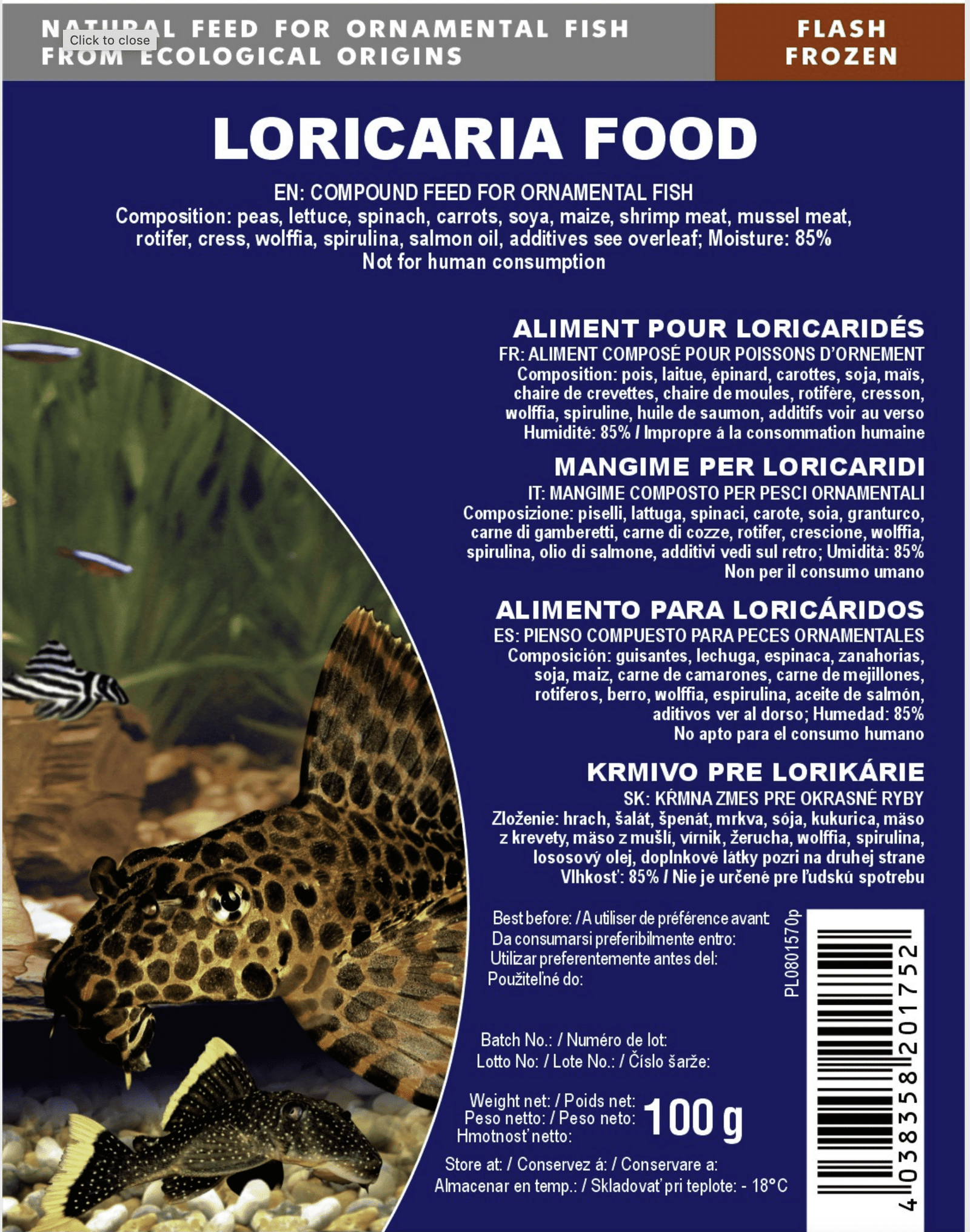

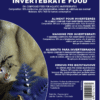
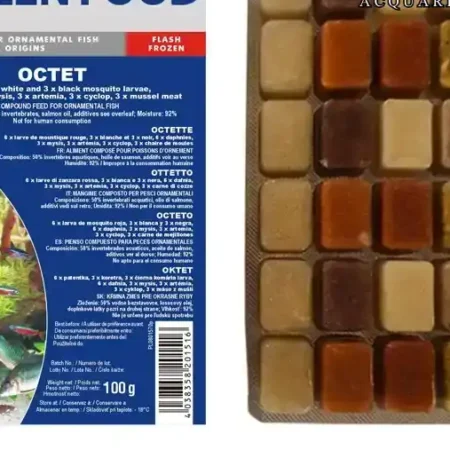

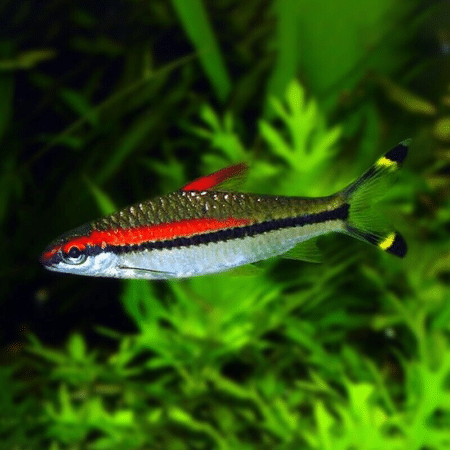


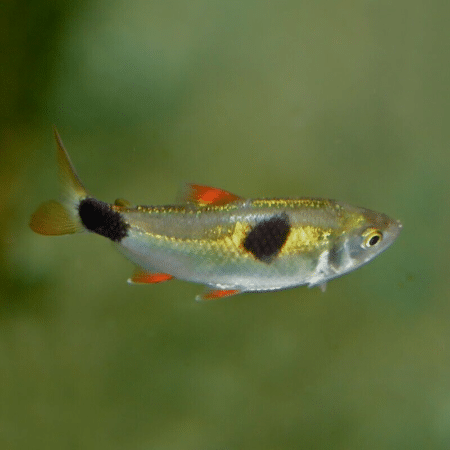
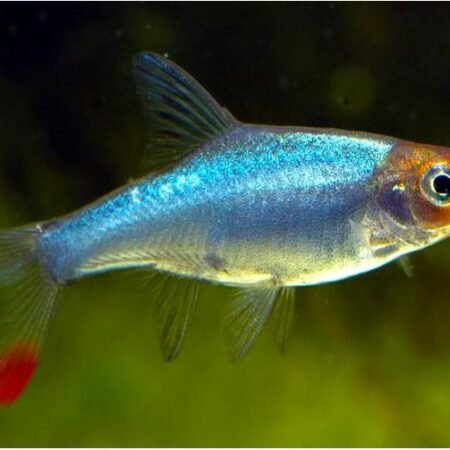

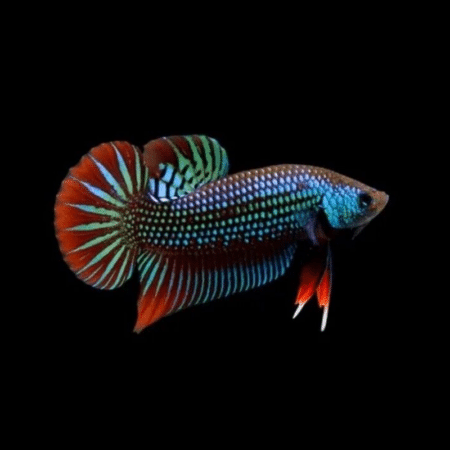
Emily Carter (verified owner) –
As a passionate fish parent, I’m always on the lookout for high-quality food that keeps my aquatic friends healthy and happy. The 6X100G Loricaria Food Blister has been an absolute game changer for me, especially for my plecos! I’ve been using it for about two weeks now, and I can honestly say my fish are thriving. These veggie and seafood sinking cubes are just the right size for them, and they devour them in no time.
What I appreciate most is that these frozen food cubes contain a great mix of nutrients that my fish love. I noticed a marked increase in their activity level and overall coloration after just a week. Compared to other frozen foods I’ve tried, this one has a better blend of ingredients, and there’s no messy residue left in the tank, which keeps my water cleaner.
I highly recommend this product for anyone keeping herbivorous or omnivorous fish. It arrived quickly and was packaged well, ensuring all the cubes stayed frozen during transit. The only minor concern I had was that some of the cubes were a bit uneven in size, but it hasn’t affected my fish’s enjoyment at all. I’ll definitely be purchasing this again!
Emily Carter (verified owner) –
I can’t say enough good things about the 6X100G Loricaria Food Blister! As a passionate fish parent, I’m always on the lookout for the best nutrition for my loricaria catfish, and this product has proven to be a game-changer. After just a week of using these sinking cubes, my fish are not only thriving but also displaying vibrant colors I hadn’t seen before!
What I love most is the blend of veggie and seafood in each cube, providing a well-rounded fish diet that my cats just devour. I’ve tried other frozen foods in the past, but they often left leftover bits floating around, leading to water quality issues. With these sinking cubes, everything gets eaten up quickly, which keeps my aquarium clean and my fish happy.
The blister packaging is super convenient, allowing me to store them in the freezer without any mess. The only tiny downside is that it can be a bit tricky to get them out of the blister if you’re in a hurry, but it’s worth it for the quality. I highly recommend this product to anyone with loricaria catfish or other bottom feeders. They’ll love it, and you’ll love seeing the difference in their health and behavior. I will definitely be restocking soon!
Jessica Miller (verified owner) –
I’ve been using the 6X100G Loricaria Food Blister for about two months now, and I couldn’t be happier! My Loricaria catfish have shown such great growth and vibrant colors since I started feeding them these sinking cubes. The blend of veggies and seafood in this frozen food is just perfect for their diet, and it really enhances their health and energy levels. I’ve tried other brands before, but this particular product seems to have a better balance of nutrients. Plus, it’s so easy to use! Just pop the blister out, thaw a cube, and drop it in. I also appreciate that it doesn’t cloud the water, which is a concern I had with some alternatives. My fish are thriving, and it’s such a joy to watch them enjoy their meals! A minor tip: make sure to thaw the cubes before feeding to ensure your fish can access the food easily. If you have Loricaria catfish or any other bottom feeders, I highly recommend this frozen food. It’s truly made a difference in my aquarium, and they seem happier than ever!